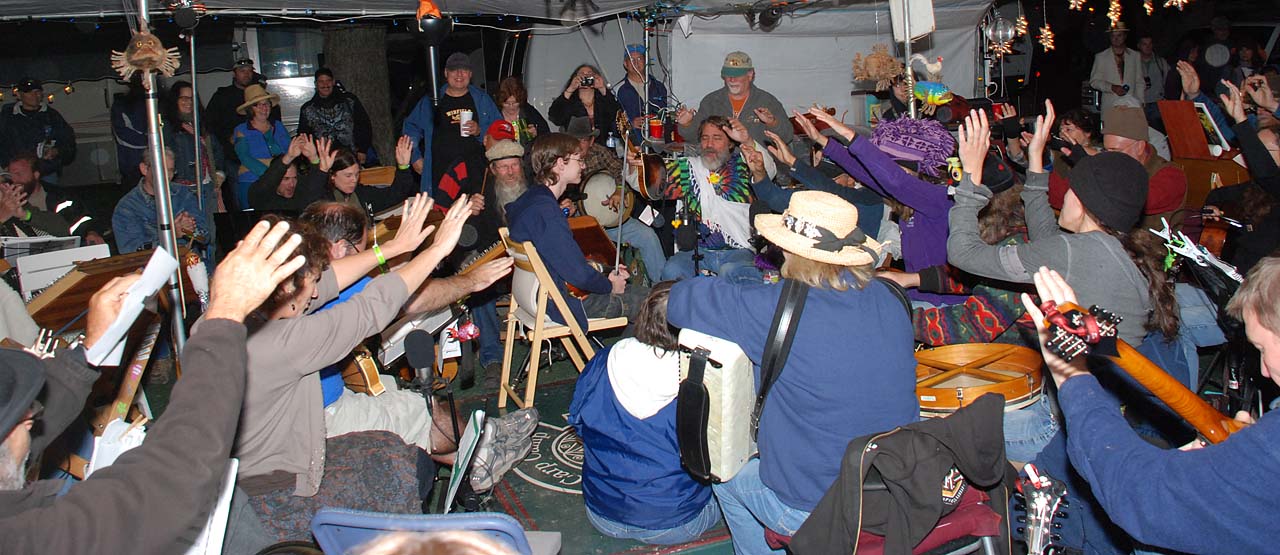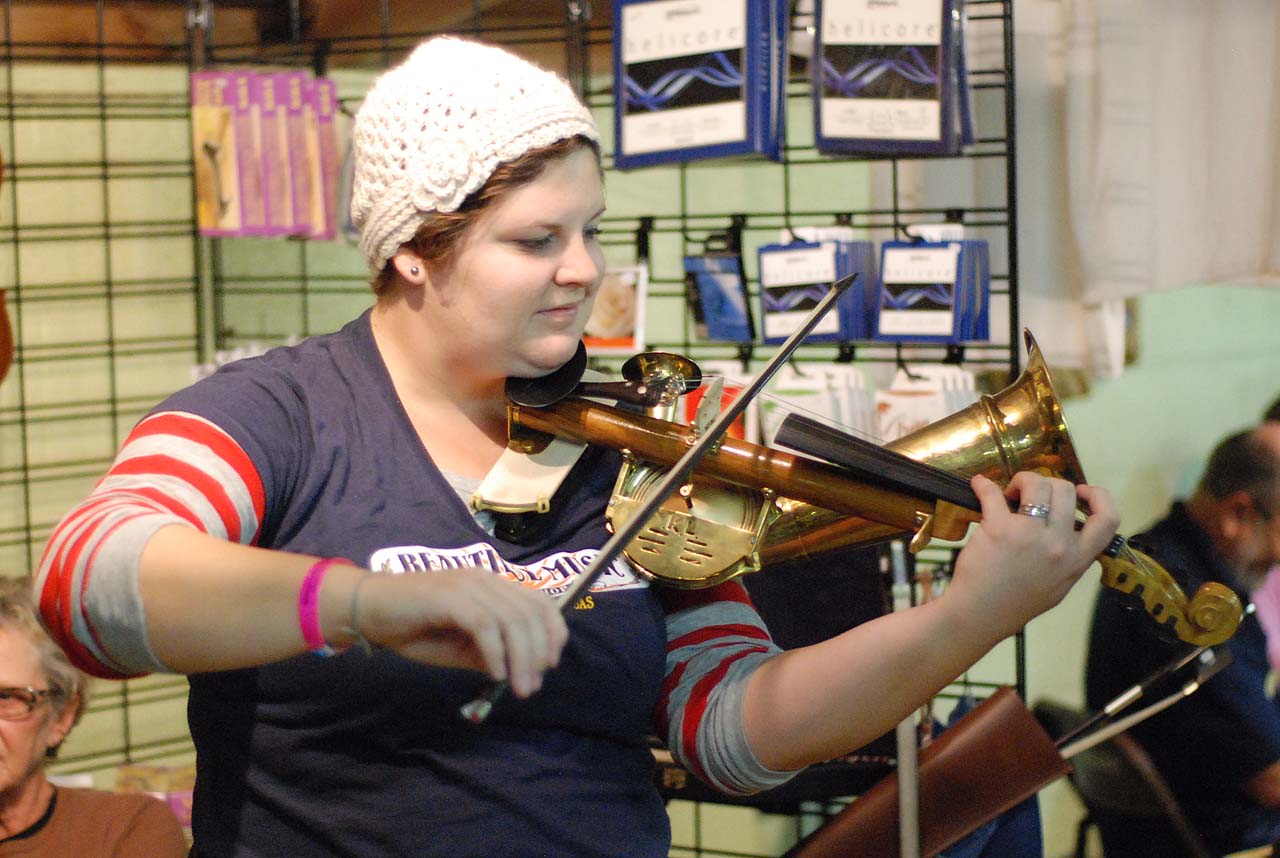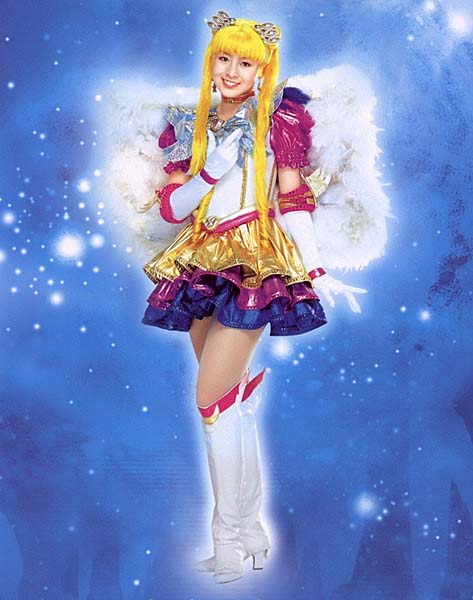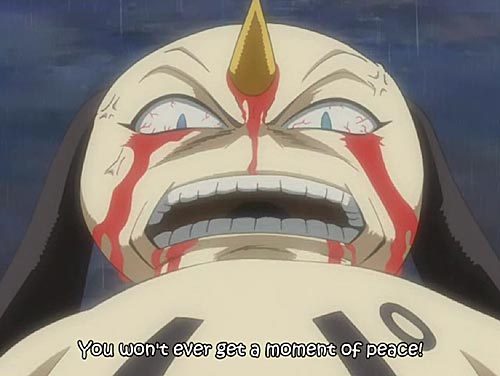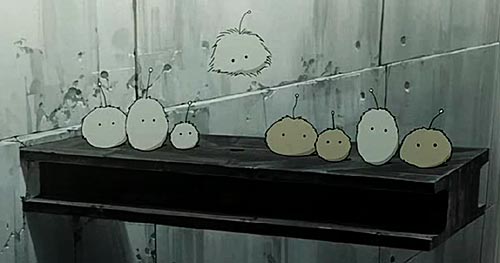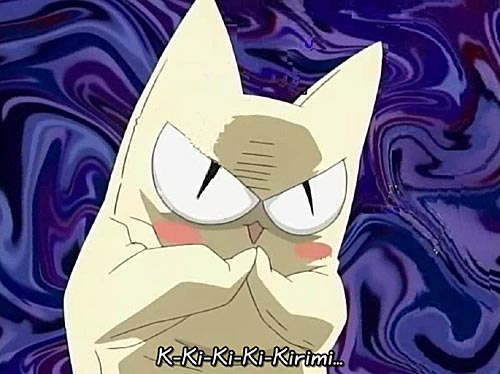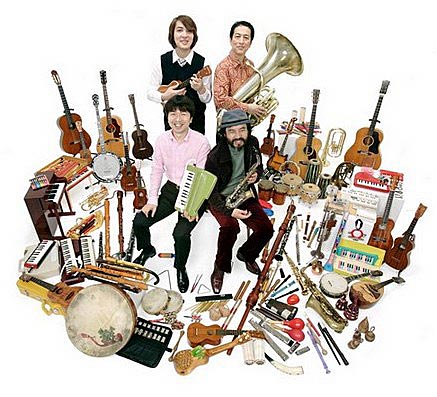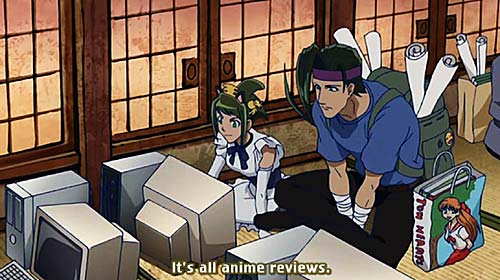I’m not terribly impressed with Ghost Hound — yet, anyway — but I do like the opening song, “Poltergeist,” by Mayumi Kojima. A few days ago I came across something listed as “Ghost Hound OP album.” It turned to be Kojima’s “A Musical Biography 2001-2007,” and it’s not standard J-pop. Most of the songs fall somewhere between novelty jazz and rock, with touches of rockabilly, surf guitar and the top 40 of an earlier era. To be painfully honest, on some of the tunes I enjoy the band and the arrangements more than her singing, but she earns points for an idiosyncratic repertoire. “Poltergeist” is Kojima at the darker, rockier end of her range; here’s something more playful, “???????!,” or “The Last Shot.”
[mp3]http://tancos.net/audio/TheLastShot.mp3[/mp3]
*****
It’s an obvious point, but perhaps worth making anyway. Some series should be marathoned, while others are best appreciated one or two episodes at a time. For most series, of course, it doesn’t much matter. I’ve watched a dozen episodes of Cardcaptor Sakura in one sitting, and also watched one per evening for weeks, and enjoyed it equally both ways. However, something like the Divergence Eve/Misaki Chronicles saga demands to viewed in one or two long sittings (if you can get past the bizarre character designs ((Kei’s and Yuri’s busts are as large as I find attractive; bigger than that just looks grotesque.)) and the mystifying first episode. The series’ creators perhaps expected too much of the casual viewer and the professional reviewer). Don’t put the first disc in your player late in the evening if you need to work the next day. Seirei no Moribito is another to marathon, as is Baccano!. I’ve held off watching the second half of SnM until all of it is available and I have six uninterrupted hours available to spend on it (maybe Thursday, finally).
Lightweight comedies and farces, on the other hand, are best viewed one or two episodes at a time, else they become cloying and the formulae become too obvious. Galaxy Angel A and Z, Animal Yokocho, Kerero Gunsou, Muteki Kanban Musume, Sayonara Zetsubo Sensei, etc., are all best taken in small doses. Also, some of the more thoughtful episodic series benefit from being watched one episode at a time, with time to reflect between viewings. I can’t imagine wanting to marathon Mushishi, for instance, or Kino’s Journey.
*****
A bit of good news via Anime on DVD: Martian Successor Nadesico is being reissued as a “perfect collection.” It’s due out January 1.
*****
Mickey Mouse Feio. (Via Cartoon Brew.)
*****
What exactly is Aria?
… it’s essentially 40 filler episodes.
